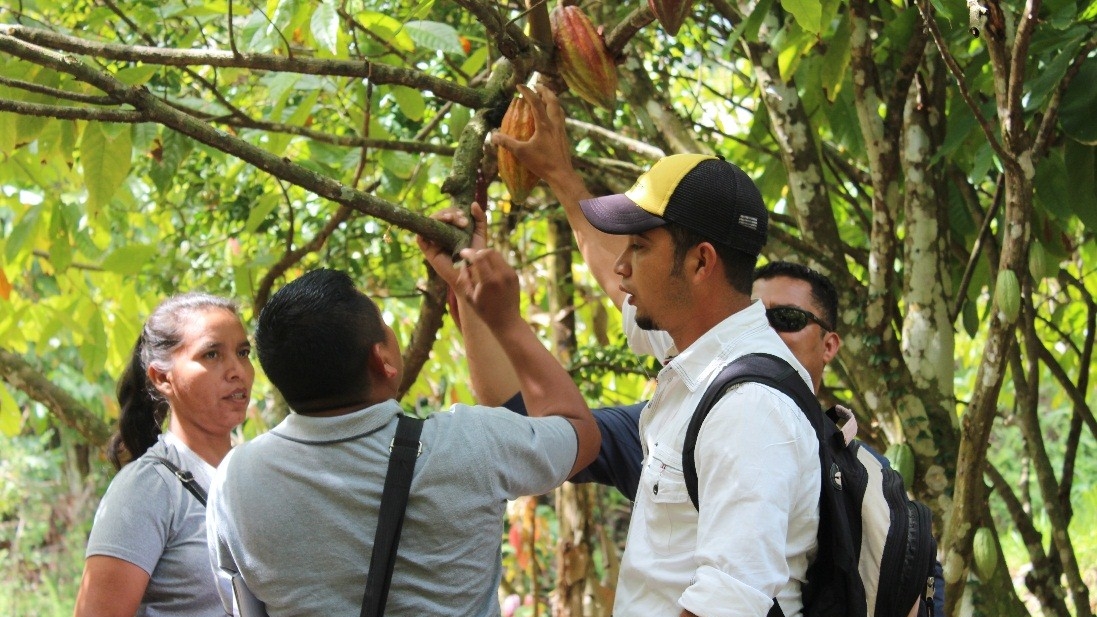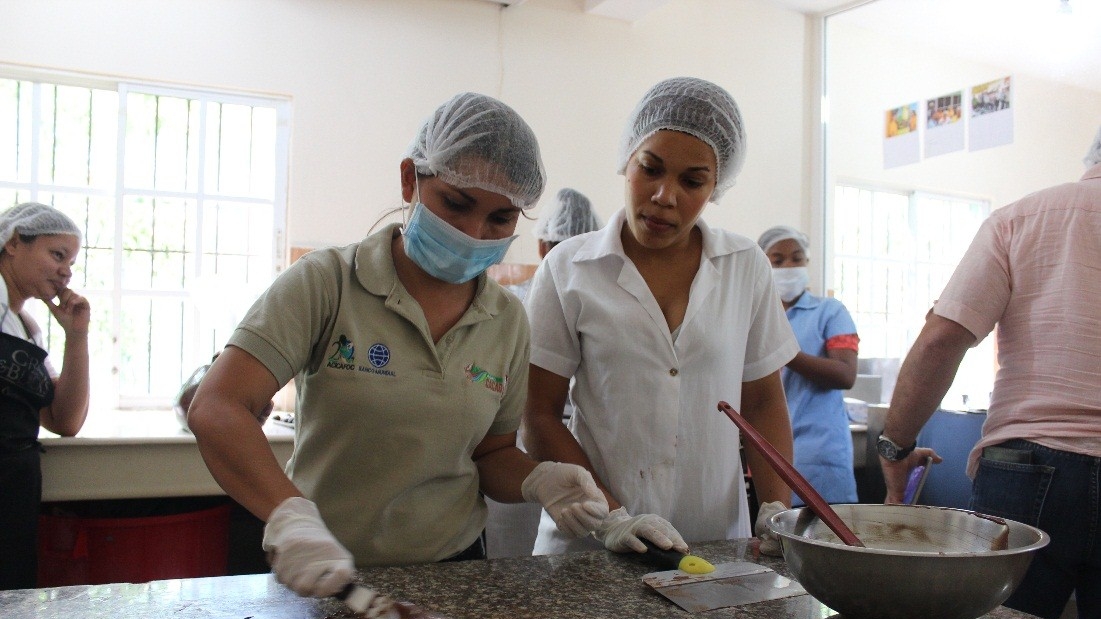Challenge
Small-scale indigenous and Afro-descended cacao farmers in Honduras were engaging in poor farming and production practices and lacked the necessary entrepreneurial skills and management knowledge to expand production and increase their sales into new market. The challenge was to introduce new environmentally sound farming and production methods and create an entrepreneurial mentality for sustainable growth and development. In addition, with improved production and quality, the farmers would need to learn how to market and negotiate prices.
Solution
The World Bank’s South-South Unit sponsored the trip by the 10 Honduran farmers, members of the mestizo, Pech, and Afro-descended communities of both genders. Each farmer represented a farmers’ association. Drawing on the experience of the farmers in the Dominican Republic, the South–South Exchange provided the Honduran farmers with the training to manage cacao production as a lucrative enterprise.
In addition, the Bank-supported Environmentally Sustainable Cacao Production for Small-Scale Indigenous Peoples and Afro-descendant Farmers Project (AGROCACAO) provided an operational development model that promoted territorial development and agroforestry to foster environmental protection, conservation, and recovery of damaged and eroded areas. The project targeted small cacao farmers in the departments of Atlántida, Olancho, and Gracias a Dios. The project focused on promoting agroforestry as an environmentally friendly activity to improve the farmers’ livelihoods. The project also promoted organic production using native species, which are more resistant to diseases and are known for their excellent quality. It also provided technical assistance for the farmers and entrepreneurs.
Results
The visit to the Dominican Republic provided the Honduran cacao farmers with the opportunity to improve their knowledge in a number of areas:
- Organization planning and resource management: The farmers visited and learned about the organizational model and structure of the National Confederation of Dominican Cocoa farmers (Conacado), one of the country’s leading exporters with more than 8,500 small farmers.
- Organic and sustainable cultivation methods: The farmers also visited the departments of El Seibo and María Trinidad Sánchez, where they learned about organic methods to optimize the cacao production and reduce some diseases.
- Cocoa chain value: The four women farmers visited the Women’s Association “Esperanzas Unidas,” where they participated in the elaboration of cocoa derivatives, such as chocolate, jam, and cocoa butter.
- Fair trade commercialization: The farmers learned about the process and importance of acquiring fair trade certificates to obtain a better selling price and better conditions for their communities.
- Marketing: The farmers learned about the various markets for the different qualities of cocoa beans and the different organic and fair trade certifications. They also visited the farm of Eric Reid, the owner of a gourmet chocolate factory, where they learned about this specific market niche.
The farmers who travelled to the Dominican Republic introduced the lessons learned to their organizations and other groups through workshops organized around Honduras. AGROCACAO also showed tangible results in the number of beneficiaries, the number of hectares cultivated, the establishment of chocolate factories, and in the enhancement of skills. The project exceeded by almost 200 its target of reaching 1,000 farmers. WHAT DOES THIS MEAN? As a result of these efforts, beneficiaries who were required to provide 10 percent as counterpart have provide up to 46 percent. The President of the Republic of Honduras will inaugurate one of the chocolate factories on April 9, 2015.

